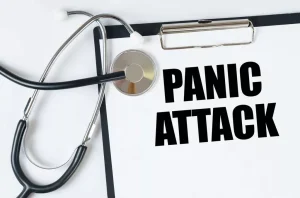The benzodiazepine withdrawal syndrome and its management PMC
But suicides have occurred in several reported clinical trials of benzodiazepine withdrawal. If depression is severe during benzodiazepine withdrawal as in any other situation, it seems foolhardy to leave it untreated. As withdrawal progresses, patients often find their physical and mental health improves with improved mood and improved cognition.

Diazepam Interactions: 7 Things to Be Aware of
Like many other issues concerning benzodiazepines, the answers to these questions are still unclear. Benzodiazepine concentrations in the blood have been measured and shown to reach undetectable levels in 3-4 weeks after cessation of use in people withdrawn from clinical doses. Information on benzodiazepine concentrations in the brain and other tissues is difficult to obtain, especially in humans. Benzodiazepines certainly enter the brain and also dissolve in all fatty (lipid-containing) tissues including fat deposits all over the body. It is possible that they linger in such tissues for some time after blood levels have become undetectable.

TABLE 1. BENZODIAZEPINE WITHDRAWAL SYMPTOMS

GABA acts as a sort of speed bump that helps all the other chemical messengers travel through your brain at a reasonable pace. A person should always tell their doctor about any other drugs that they are using and seek medical help at once if any unexpected benzodiazepine withdrawal reactions occur. Some drugs may intensify the effects of benzodiazepines, while others may make them less effective. Anyone who shows signs of an overdose or an adverse reaction after taking benzodiazepines will need emergency medical help.
What are the differences between benzodiazepines?
However, there have been no controlled trials and it is not clear whether these drugs themselves cause withdrawal effects. In practice additional drugs are seldom needed with very slow benzodiazepine tapering. Only in special situations there might be a place for an antidepressant, beta blocker, sedative antihistamine or anticonvulsant. There is no need to avoid ordinary pain killers such as Tylenol, Feldene etc. for everyday aches and pains.
All the evidence shows that a steady decline in symptoms almost invariably continues after withdrawal, though it can take a long time – even several years in some cases. Most people experience a definite improvement over time so that symptoms gradually decrease to levels nowhere near as intense as in the early days of withdrawal, and eventually almost entirely disappear. All the studies show steady, if slow, improvement in cognitive ability and physical symptoms.
Management of cannabis withdrawal
- Each of these studies received mixed results, with no statistically significant advantage to BZD therapy.
- If a fit does occur in these circumstances, it is usually only a single fit and causes no lasting damage.
- In fact, if you take your medication every other day, you may notice rebound symptoms on the day between doses.
- Anecdotally, a slow rate of reduction may reduce the risk of developing a severe protracted syndrome.
Chronic use of BZD leads to a small but significant change in fluid intelligence, while long-term use of BZD correlates with worse cognitive decline when compared to the effects of using a high dosage [21]. Benzodiazepine withdrawal syndrome (BZWS) can result from the chronic prescription and use of benzodiazepines or Z-drugs. It can occur whether or not the patient stops using the drug, although the withdrawal syndrome is usually of a more severe nature when the drug is withdrawn.
At first, you might experience mild symptoms, like trouble sleeping and anxiety. Then you may experience more withdrawal symptoms that can last up to 4 weeks. It’s likely that higher doses of benzos lead to more intense withdrawal symptoms. Particularly, high doses of shorter-acting benzos may be most likely to cause intense withdrawal. The benzo withdrawal timeline depends on how long you’ve been taking your benzo and at what dose.
- Benzodiazepines inhibit both dreaming sleep (rapid eye movement sleep, REMS) and deep sleep (slow wave sleep, SWS).
- It was also reported that the risk of death in patients using less than 18 pills per year is increased by 3.6-fold [48].
- Certain factors play a role in the severity of withdrawal symptoms, such as dosage, duration of action of the BZD duration of treatment with the drug, and severity of psychiatric symptoms pre-treatment.
- The mainstay of BZD withdrawal treatment at this time is a slow taper off the drug to prevent severe withdrawal symptoms; however, many patients cannot tolerate this taper without experiencing rebound anxiety and other symptoms.
